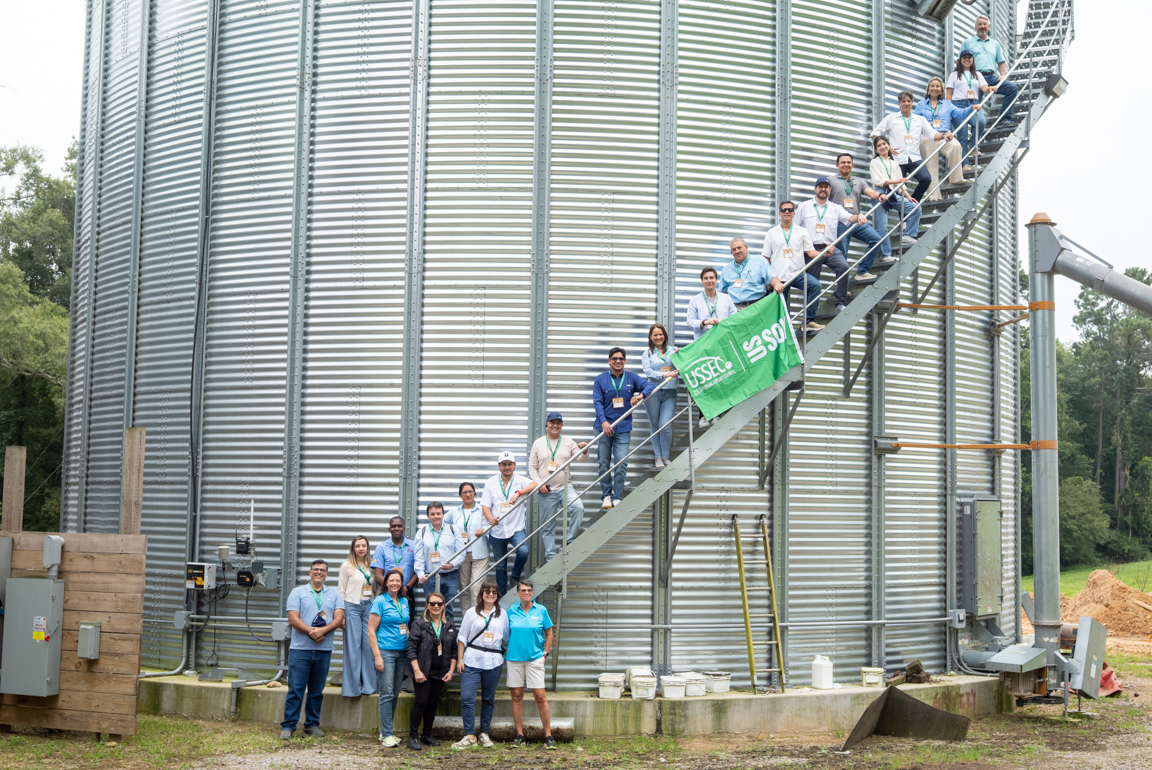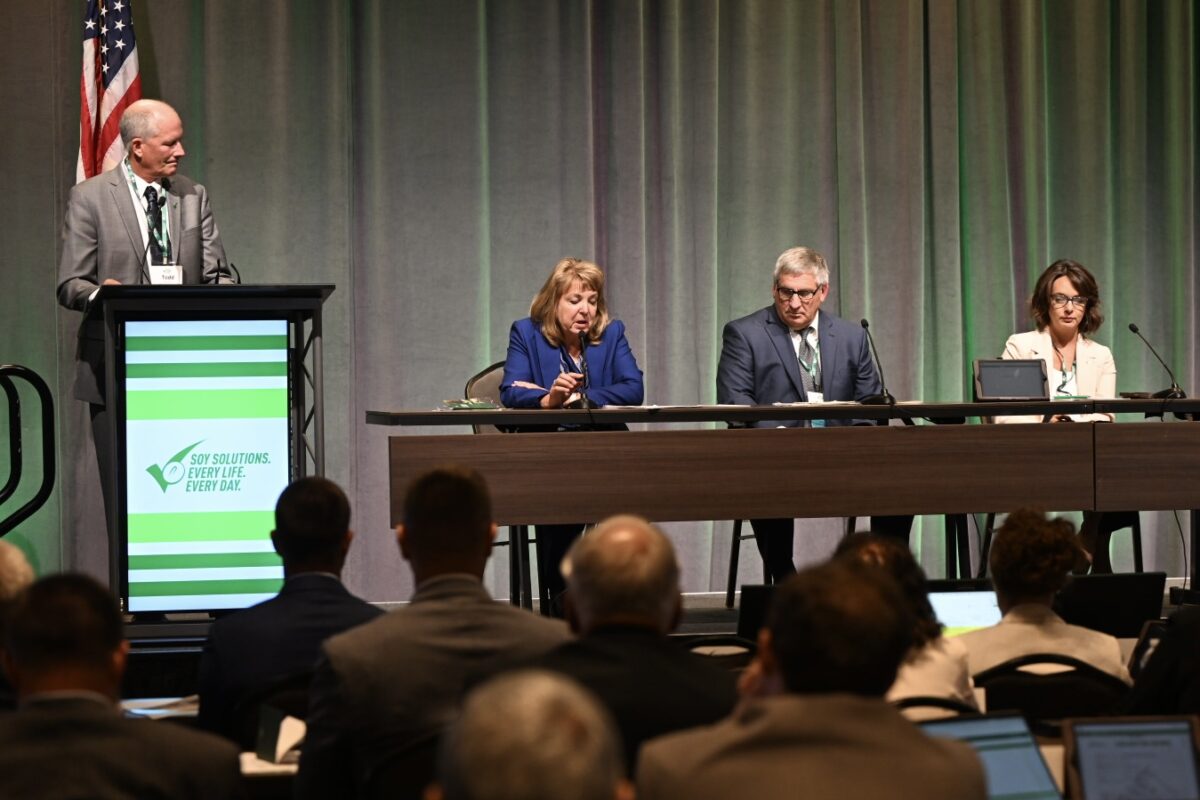Filling the Cracks with U.S. Soy

Water is the enemy of highway structures. Water, as well as de-icers, salt and chemicals, gets on a highway and into its concrete pores, where it causes cracks, chips, gouges and potholes. Once the network of concrete pores is compromised, the strength of the concrete crumbles.
Seeking to address cracking, a new product featuring U.S. soy recently hit the pavement in Indiana.
PoreShield, a soy-based concrete durability enhancer, lengthens the lifespan of roads and bridges by protecting the concrete pores from salt, ice and water damage. Developed from an innovative soy checkoff research collaboration, the product supports demand for soybeans and reduces maintenance costs for U.S. infrastructure by using soy in the PoreShield formula.
The soy checkoff partnered with the Indiana Soybean Alliance on research and market development efforts for soy-based solutions in infrastructure. Now, select Indiana counties have the opportunity to use the new soy-based durability enhancer on their bridges — made possible through farmers’ checkoff investments.
“PoreShield unlocks yet another use that drives demand for our soybeans,” said John Jansen, United Soybean Board vice president of oil strategy.
Miles of Bridges Supplied by Acres of Soybeans
This year, Indiana Public Works is applying PoreShield to 330,000 square feet on 77 bridge decks within the state, with aims to expand use in the future. As more locations adopt PoreShield as a solution, the demand for soybeans grows. On average, 200 bushels of soybeans are used for every two-lane mile of concrete highway joint treated with PoreShield.
“With PoreShield, there’s enormous potential for roads and bridges that need these critical enhancements,” said Jansen.
In 2008, the Indiana Department of Transportation came to Purdue University seeking a durable and sustainable solution to the costly problem of protecting highway structures. They partnered with the soy checkoff and ISA to research soy methyl ester as an environmentally friendly, longer-lasting alternative in concrete durability enhancers.
As a result of that research cooperation, PoreShield enhances the durability of concrete and provides more than 10 years of protection. This product is the only effective solution to preserving concrete surfaces, old or new.
“Collaboration between the national soy checkoff and the Indiana Soybean Alliance made this new use for soybeans a reality,” said Mark Seib, soy checkoff farmer-leader from Poseyville, Indiana.
Checkoff Investments Down the Road
ISA partnered with the soy checkoff to create the Infrastructure Preservation program. The program helps to cover the cost of PoreShield for local communities. Through the program, Indiana counties have the opportunity to use PoreShield on their bridges.
And Indiana is just the tip of the iceberg. PoreShield is ideal for states throughout the Midwest that freeze, thaw and require de-icing. For coastal regions with heavy salt content, PoreShield reduces absorption of water and ion diffusion.
“With the local connections and a boots-on-the-ground approach, the checkoff and ISA have created a model that can be replicated across other states to build further momentum,” said Seib.
The soy-based concrete durability enhancer’s success is just one of many on the road paved with soy checkoff investments and partnerships.
Jansen said, “A renewable alternative, U.S.-grown soybean oil as a concrete durability enhancer is just one of the 1,000 soy-based products currently on the market.”
Visit indianasoybean.com/poreshield to learn more about this soy innovation.



